The Japanese Garden at Cowden: An iconic Oriental garden in the heart of Clackmannanshire
Described in 1925 as the most important Japanese garden in the West, the Japanese Garden at Cowden in Clackmannanshire — the ancestral home of Sara Stewart — fell into decline and was eventually closed in 1955. Now, it has been magnificently restored, as Caroline Donald explains. Photographs by Clive Nichols.
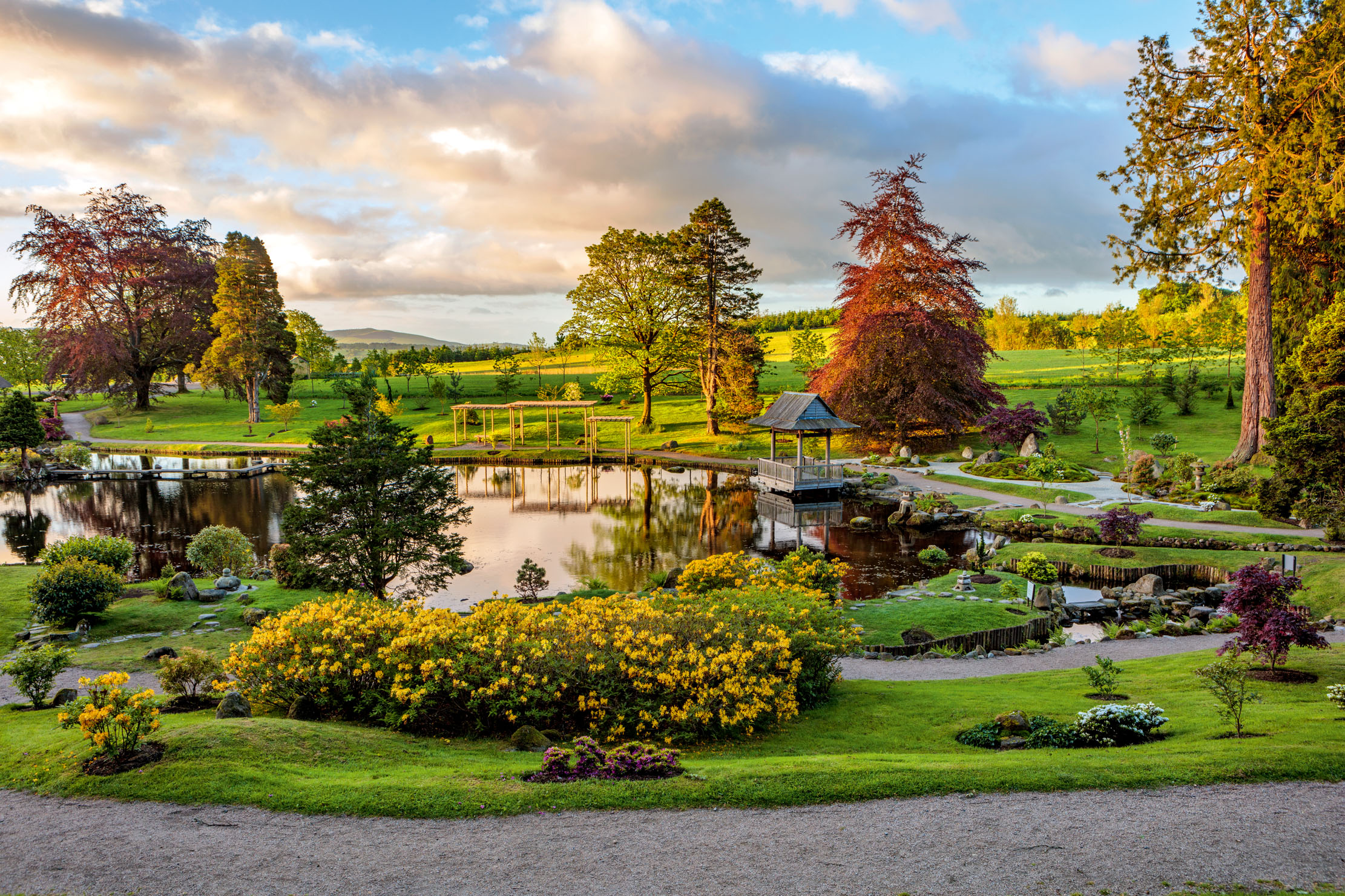
Central to the creation of the Japanese Garden at Cowden is a series of adventurous women. The tale begins with Isabella ‘Ella’ Christie (1861–1949): one of the first women to be elected a Fellow of the Royal Geographic Society, she spoke four languages and travelled to faraway lands, such as Kashmir, Tibet, Borneo and Malaya, keeping meticulous diaries. In 1925, she published Through Khiva to Golden Samarkand, an account of her travels along the Silk Road through the Russian empire.
However, it was the otherworldly gardens of Tokyo and Kyoto that inspired her on a visit in 1907, three years before the great Japanese exhibition at White City of 1910 kicked off a craze for Japonisme in Britain. ‘You can imagine what it was like, having never even seen a photograph of a Japanese garden,’ says Christie’s great-niece Sara Stewart. ‘They must have seemed so extraordinary: a bit like how we felt when man landed on the moon.’
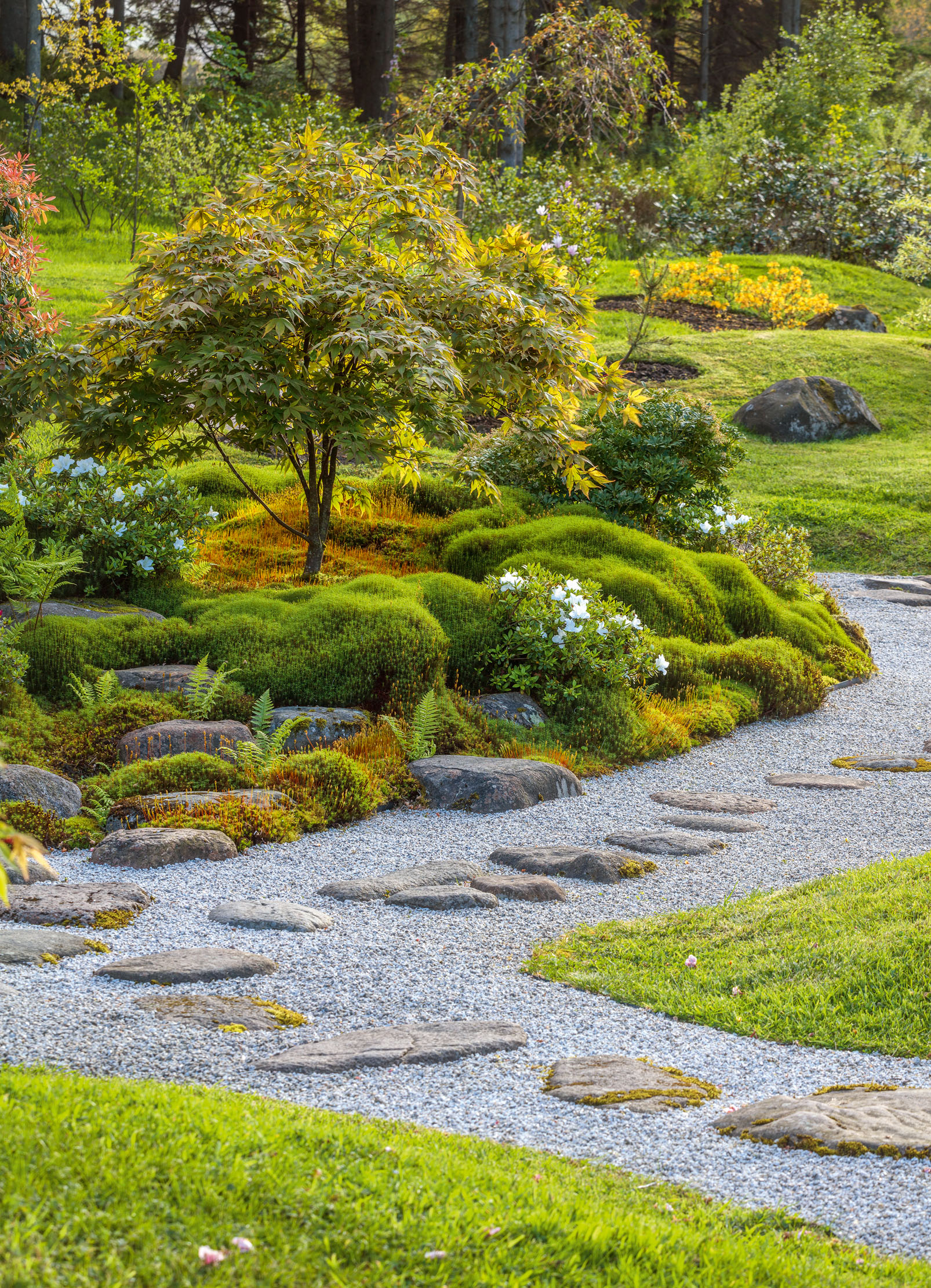
With only a few reference books to guide her, but possessed of a generous purse, the intrepid Christie decided that she would create her own Japanese garden — one of the first in the country — on the estate near Dollar in Clackmannanshire where she lived. By good fortune, Taki Handa, a Kyoto-trained designer, was studying at Studley Horticultural and Agricultural College in Warwickshire and was brought on board to design Shã Raku En, ‘the Place of Pleasure and Delight’, a garden as full of meaning and symbolism as those in Japan, but in a seven-acre hollow nestling below the Ochil Hills.
Surrounding a reflective pond — created by damming a burn — with an island garden, a stroll garden and a tea-house garden, Shã Raku En would be described in 1925 by Jijo Suzuki, Hereditary Head of the Soami School of Imperial Garden Design, as ‘the most important Japanese garden in the Western World’, not only for its integrity, but because it was accredited to a female designer — to this day a rarity in Japan.
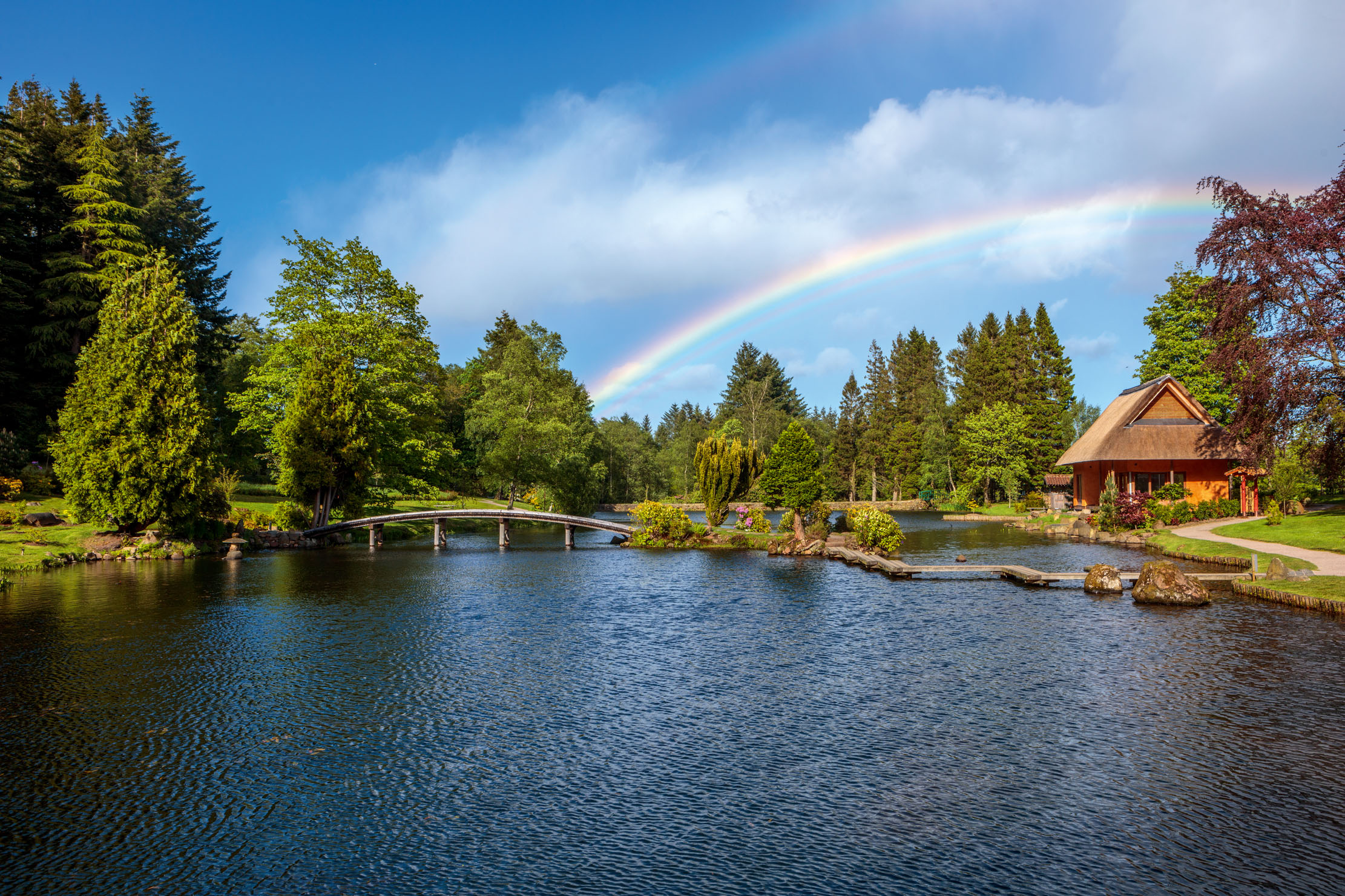
The professor himself was employed to help place the architecture, as well as planting and pruning some of the precious trees and shrubs imported from Japan, and the garden remained a site of pilgrimage for visitors and students of Japanese design until its closure in 1955.
As a child in the early 1970s, Mrs Stewart remembers being taken out on the lake for birthday parties in an old, wooden, flat-bottomed boat by her father, Sir Robert ‘Bobby’ Stewart, who died in 2019, but the garden was by then pretty overgrown. A terrible fire started by trespassing local school- boys in 1963 had destroyed all of Christie’s wooden Japanese buildings and the boys had even kicked the stone lanterns around the pond into the water. ‘My father was so devastated by what they did to the garden that, although he kept on loving it, he couldn’t justify the upkeep after the vandalism.’
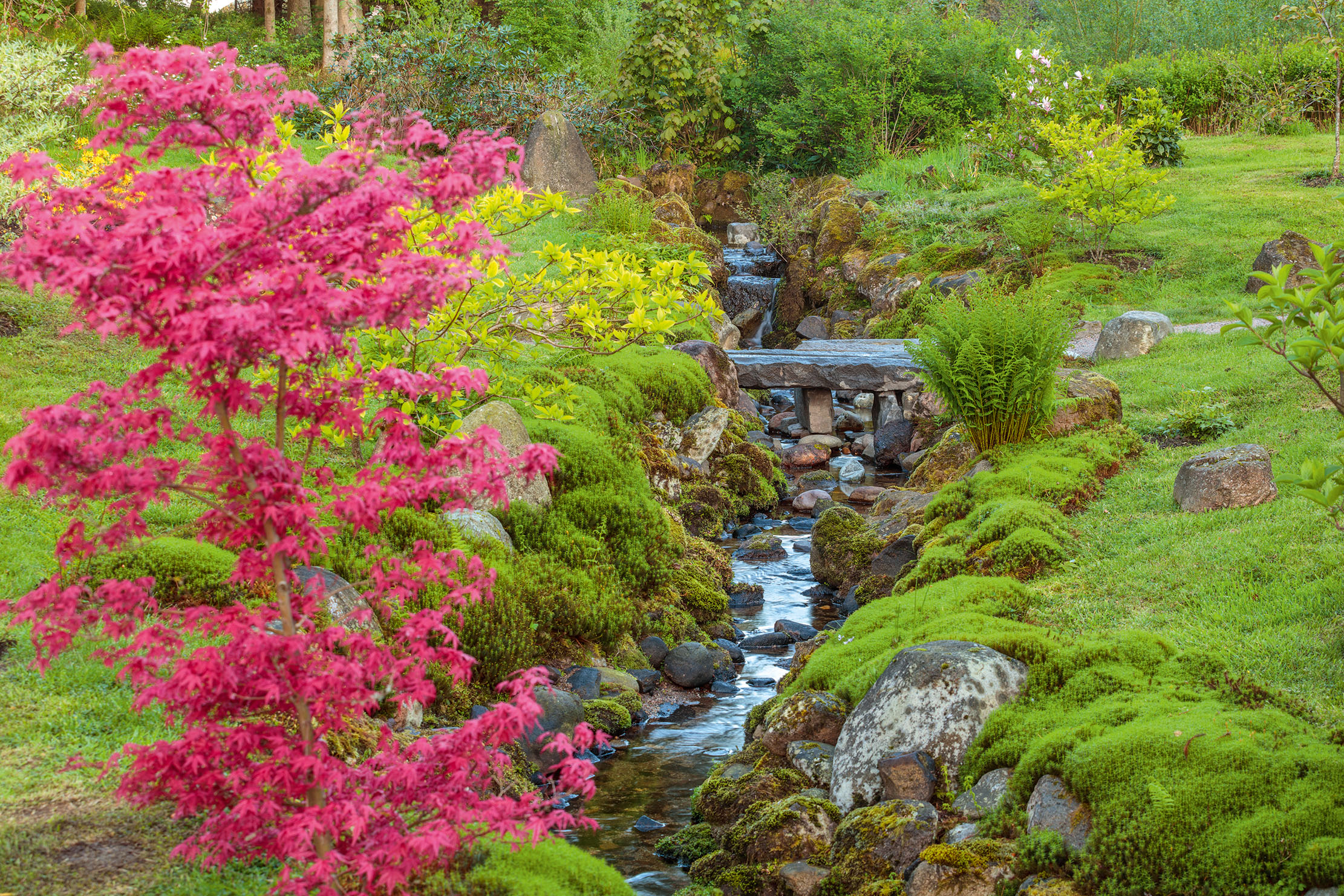
By the 1980s, it was almost impenetrable, save for a narrow path along the pond. ‘It was a mass of rhododendron and laurel and conifers — yews that were once a hedge were now trees,’ recalls Mrs Stewart. ‘There were maples, but you could hardly see them. Their colours in October were absolutely stunning, but they were suffocated; you had to bash your way through the rhododendrons to see them.’
Sign up for the Country Life Newsletter
Exquisite houses, the beauty of Nature, and how to get the most from your life, straight to your inbox.
Fast forward some 60 years from the closure and, from 2014, it has been Mrs Stewart, founder and managing director of London portrait gallery Fine Art Commissions, who has taken up the baton from her intrepid great-aunt and awakened the garden from its slumbers. ‘Historic Environment Scotland was saying it was almost at the point of no return,’ reveals Mrs Stewart, into whose care her father had placed the garden.
They put out the word and Masao Fukuhara from Osaka University of Arts, who had won a Gold medal at the RHS Chelsea Flower Show and also worked on the restorations of Japanese gardens at Tatton Park in Cheshire and at Kew Gardens, asked to visit the garden as he was over in Britain to give a lecture. He brought along his Kent-based landscape architect assistant, Ai Hishii. ‘I have got a photograph of when they first saw it. Ai’s face is a picture: it obviously looked nothing like she thought it would,’ says Mrs Stewart. Nevertheless, Prof Fukuhara offered to be involved, suggesting £50,000 as a budget. ‘When someone of that pedigree was asking to restore it, I knew it was worth doing.’
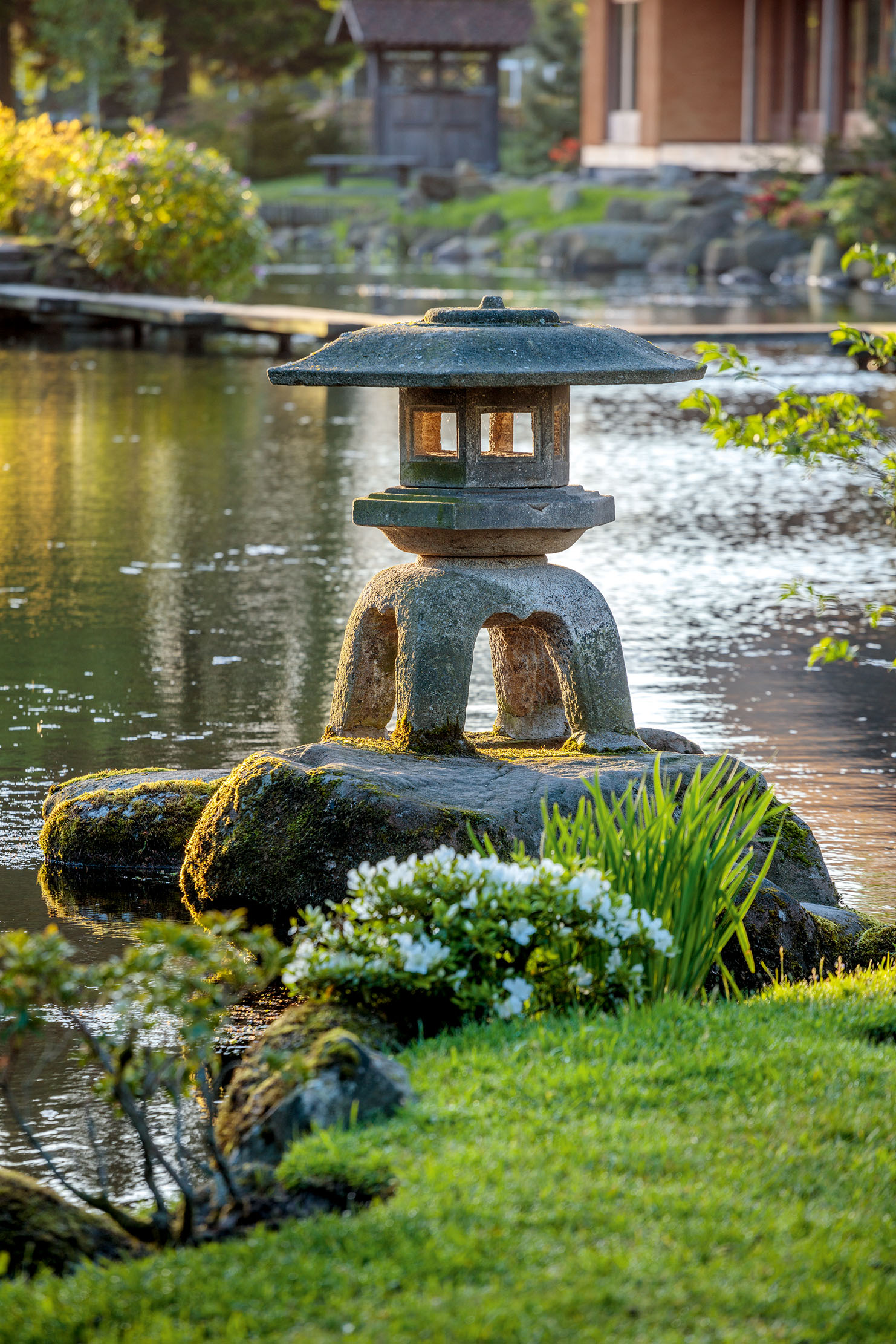
It was soon obvious that his estimate was only going to cover the first few months of clearing the site, so Mrs Stewart set up a charitable trust to fund the work incrementally, rather than apply for full funding, which would have taken four or five years to organise. Looking back, she thinks this has been the right approach: ‘It has cost me a fortune, but that was my choice. I wanted the bones to be done in Dad’s lifetime — we had Dad’s 90th birthday party there and played his favourite passage of music from Madame Butterfly on the island.’
It has also allowed many locals to become involved over the years. ‘This means more to my family; it has become a place that everyone loves,’ says Mrs Stewart. ‘So many people have been coming back year after year and we all learnt as we went along.’ Locals include the landscape contractor Dave McCullough, whose job it was to clear the site and then help with the perfect alignment of the lanterns and stones around the garden. ‘Sometimes, he would be in a tiny machine holding the stones for a day, as the professor moved them by half an inch back and forth.’
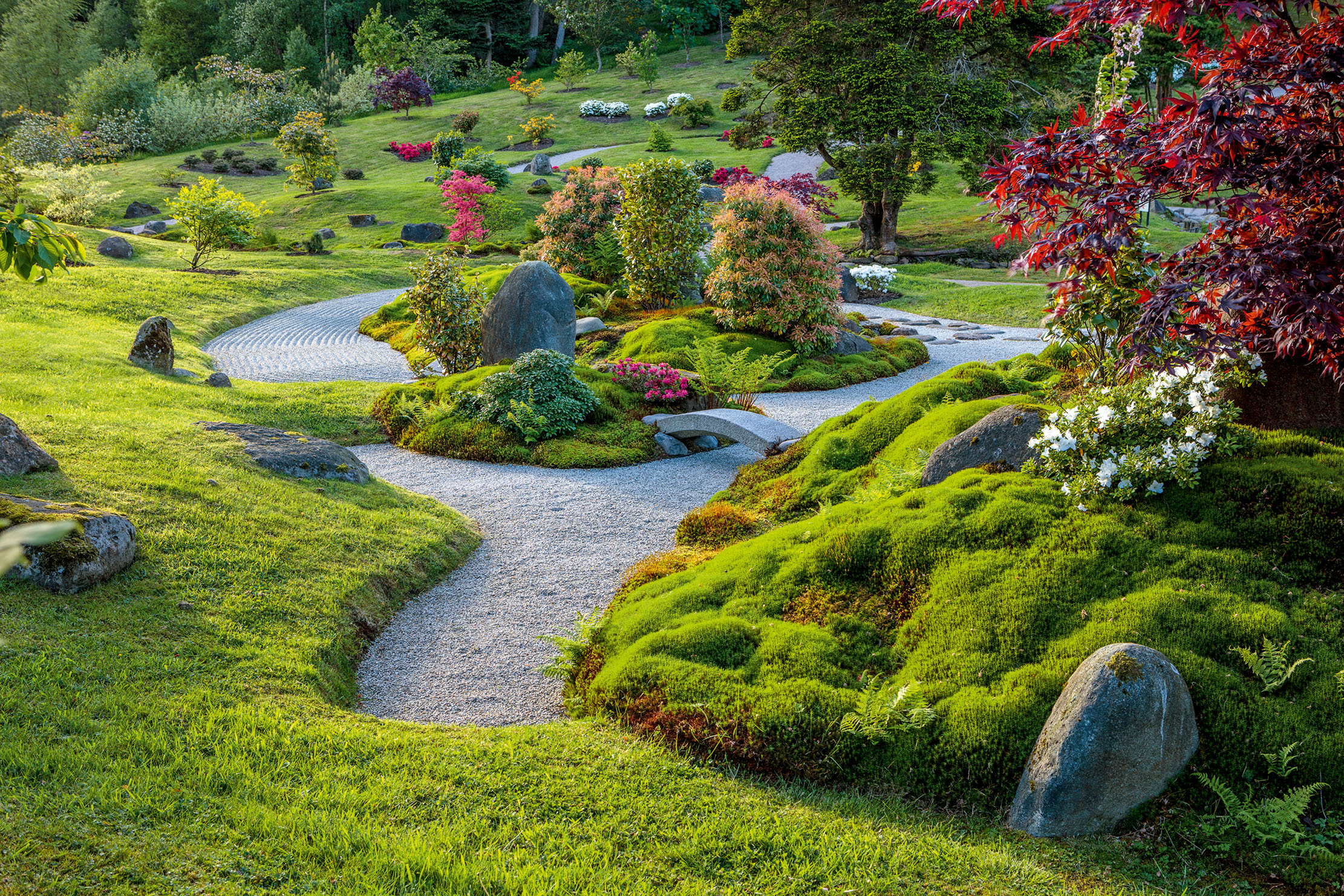
Today, Rob Grindrod, late of Abbotsbury Subtropical Gardens in Dorset, is the head gardener in charge of maintaining the existing planting of trees and shrubs with Japanese relevance (azaleas, hydrangeas and acers do well here; camellias not so) and adding more. ‘I would like to get it back to being as good as it was in Ella’s day,’ he says. ‘Japanese people say it is too open at the moment.’
There have been new elements added, such as embellishments to the dry garden, always with authenticity in mind. ‘I had Ella on my shoulders and I knew that, if I did it badly, it would be a scar on a pretty hill,’ says Mrs Stewart. It would appear this is not the case: having been told that she might expect 10,000 visitors a year at most, last year, there were 45,000. Christie would surely approve.
The Japanese Garden at Cowden, Clackmannanshire, is open until December 22 — cowden-garden.myshopify.com
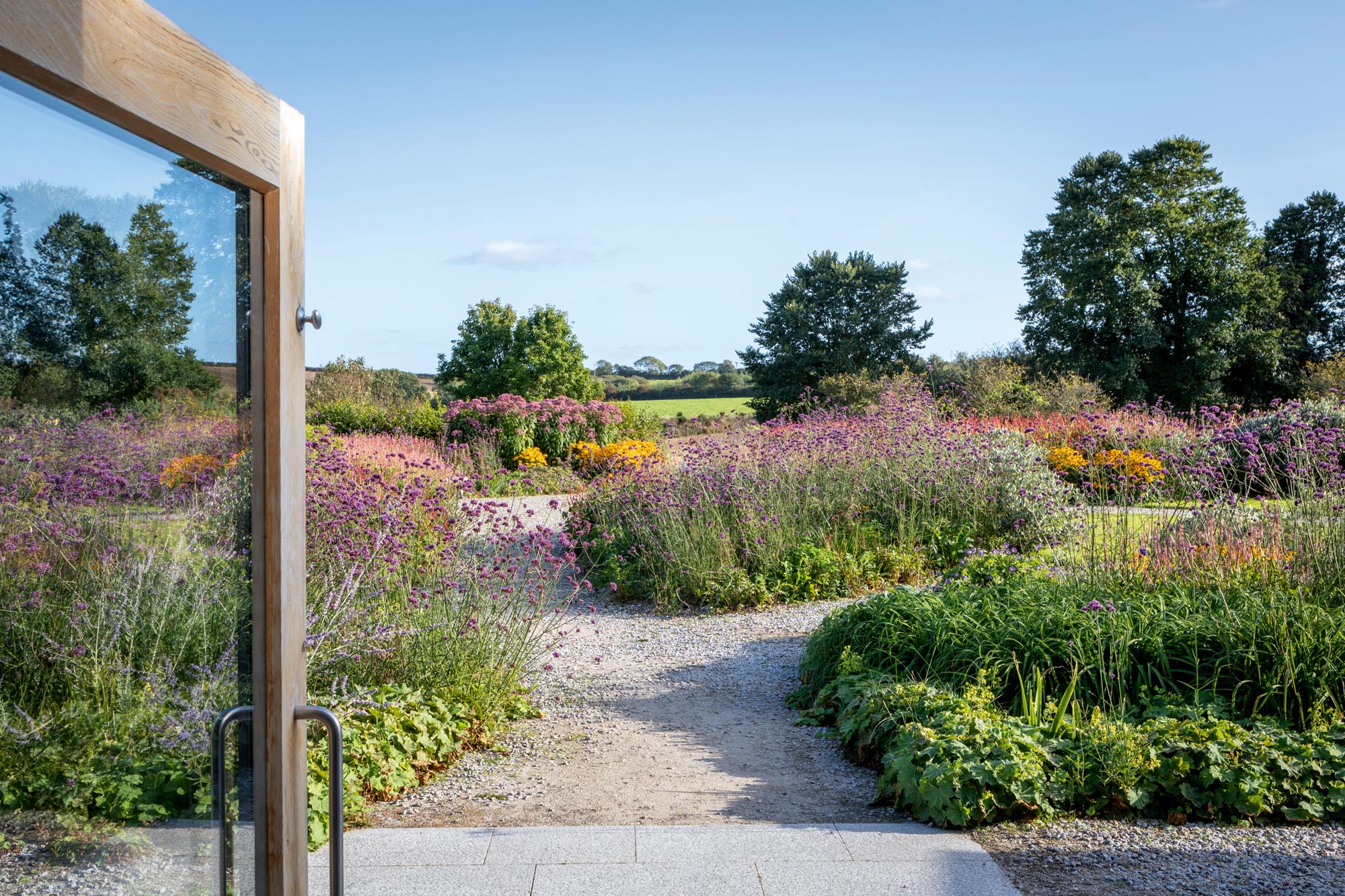
The gardens at Kestle Barton: A landscape of creeks and fields married to an award-winning gallery
Caroline Donald visits the garden at Kestle Barton Gallery, near Helford, Cornwall, a garden that marries an award-winning art gallery
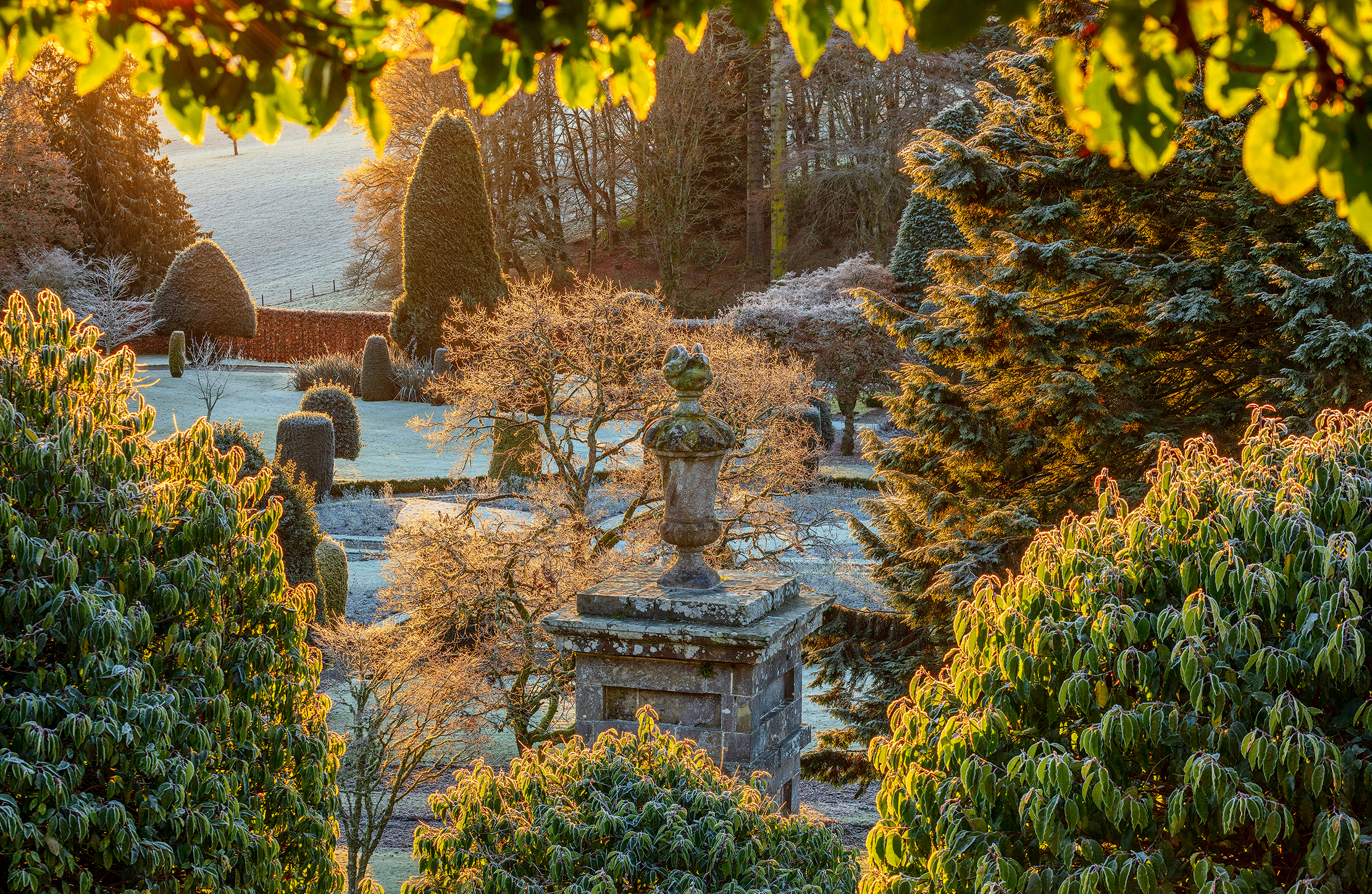
Drummond Castle Gardens in winter: The winter beauty of the gardens made famous by Outlander
In the depths of winter at Drummond Castle, near Crieff, Perthshire, the crisp outlines of the 11 miles of box
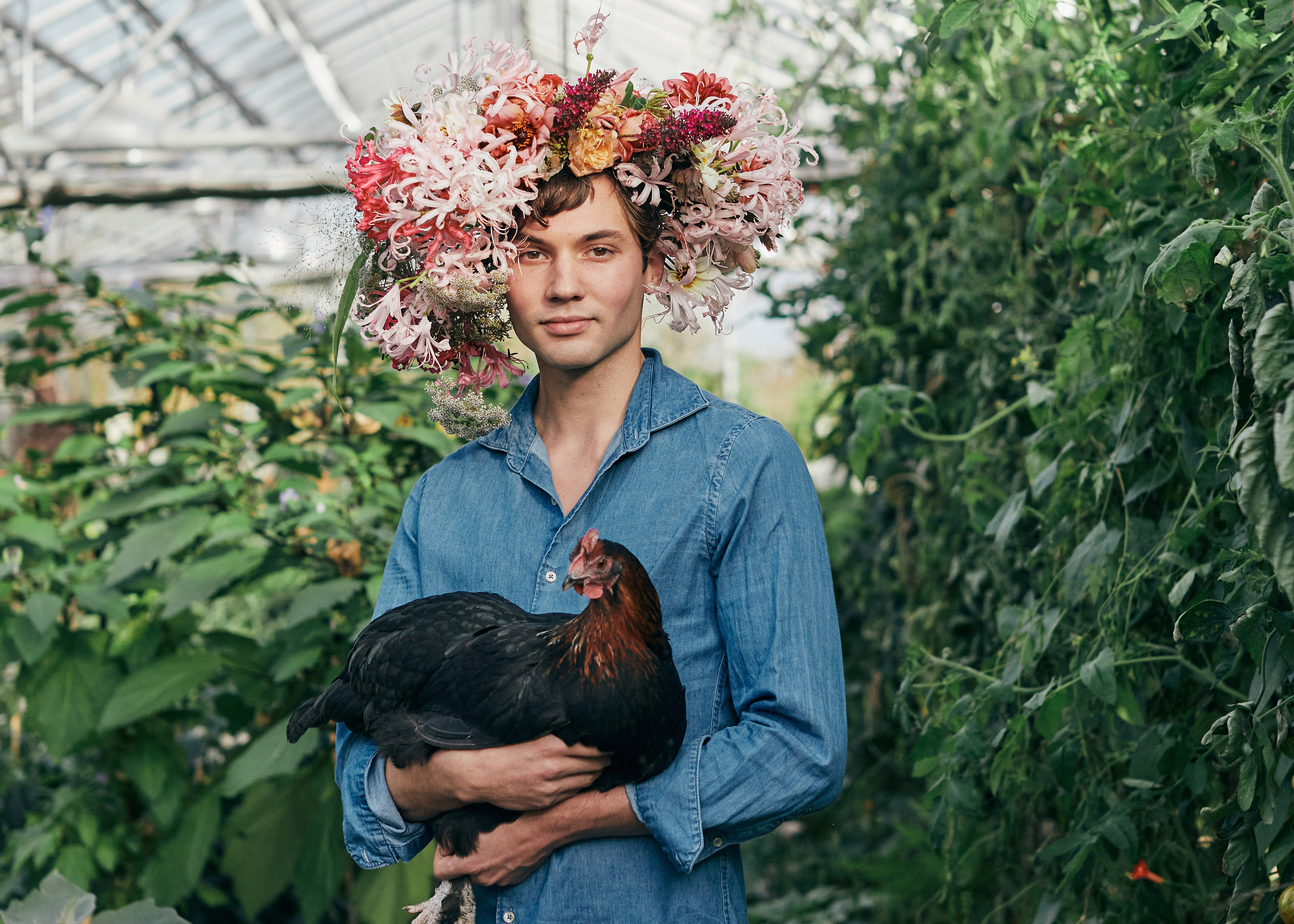
Arthur Parkinson: 'It’s a crime that we have forsaken our wildflower meadows for petrol lawnmowers and Flymos'
-
 Two quick and easy seasonal asparagus recipes to try this Easter Weekend
Two quick and easy seasonal asparagus recipes to try this Easter WeekendAsparagus has royal roots — it was once a favourite of Madame de Pompadour.
By Melanie Johnson
-
 Sip tea and laugh at your neighbours in this seaside Norfolk home with a watchtower
Sip tea and laugh at your neighbours in this seaside Norfolk home with a watchtowerOn Cliff Hill in Gorleston, one home is taller than all the others. It could be yours.
By James Fisher